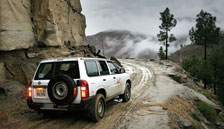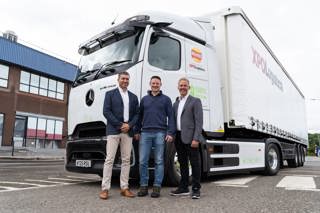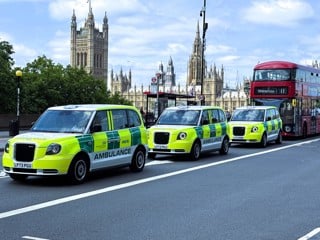Managing a fleet can be a challenging job for any fleet manager.
But throw in a disaster zone and near-undriveable conditions and the job takes on an altogether new dimension.
That is the everyday task facing Goran Zuber, global fleet co-ordinator at the International Federation of Red Cross and Red Crescent Societies (IFRC).
The IFRC is the world’s largest humanitarian network and carries out relief operations to help victims of disasters.
It combines this with development work to strengthen the capacities of its member National Societies.
The IFRC’s work focuses on four core areas: promoting humanitarian values, disaster response, disaster preparedness and health and community care, so being able to have transport at remote locations is essential.
Zuber is responsible for providing vehicles to the Red Cross and Red Crescent National Societies working around the world.
The fleet
The management of the fleet is centralised at Dubai and a key challenge is monitoring the fleet stock and ensuring there is timely deployment of vehicles in response to disasters around the world.
“The most challenging for us is the importation and registration of vehicles,” said Zuber.
“Deployment is a problem because each country has different regulations to abide by, especially when getting the vehicles imported into disaster locations.”
The main stock of vehicles is held in Dubai.
A site in Panama holds vehicles for Central and South America, with another three sites in Africa where the biggest volume of vehicles is currently needed.
The global fleet consists of 1,200 vehicles, 70% of which are 4x4s, 10% small saloons and 20% trucks.
The fleet is standardised on a maximum five-year/93,000-mile replacement cycle.
The organisation works with a number of manufacturers and has a supply chain set in place which enables it to order directly through the vehicle makers.
“It does not make economical sense to us to outright purchase vehicles,” said Zuber. “We have competitive leasing rates that work for us.”
Fleet management
The IFRC fleet introduced the concept of Vehicle Rental Programme (VRP) in 1997 to provide a more cost-efficient use of funding.
It has evolved over the years to the present structure and has proven to be the most economic way of providing standard vehicles on a non-profit making basis.
The vehicles procured for VRP are not modified. The IFRC will add some safety features and further upgrades to the vehicles in-house which are varied dependant on the location the vehicle will be traveling too.
This helps cut costs, and customise according to Red Cross/Red Crescent operational needs.
Being able to improve the efficiency of IFRC’s fleet is a challenge for Zuber. Controlling running costs is a particular challenge as the fleet is spread across the world with different environments affecting mpg, depreciation and wear and tear.
Keeping training up to date and selecting the right vehicles is crucial to fleet efficiency.
“We maximise efficiency of the fleet by providing vehicles that are fit for purpose. We also monitor the disposal of the vehicles,” said Zuber.
The IFRC will sometimes move vehicles to locations around the world where it can maximise the auction price at the end of their fleet life.
Country-based fleet managers report to Zuber and they follow policies and procedures to keep consistency within the fleet.
Zuber communicates with them regularly and uses a fleet management system to benchmark the fleets and find out the regions that may be underperforming.
Each region runs an annual training scheme and the training is repeated throughout the year.
“In Haiti we are training and testing our drivers weekly, typical training includes off road, eco driving, defensive training and use of recovery equipment,” said Zuber.
Looking to the future
The IFRC has a strategy to reduce its environmental impact, including reducing CO2 emissions by 1,000 tonnes by 2015 and by 2020 being in a position to offset the rest of the emissions completely.
In the future, the organisation will focus on revising the whole fleet and reducing the number of 4x4s.



















Login to comment
Comments
No comments have been made yet.